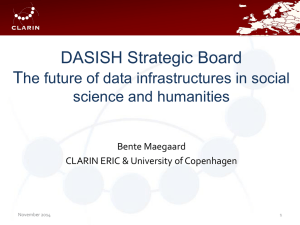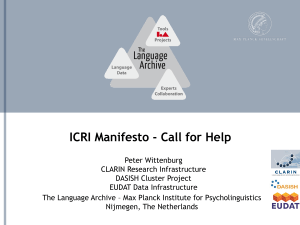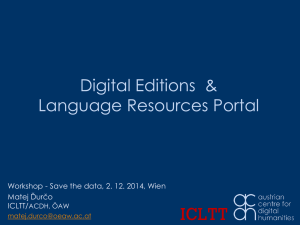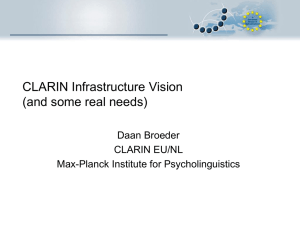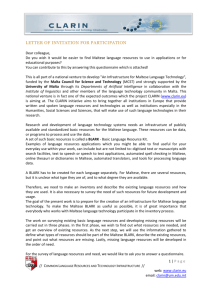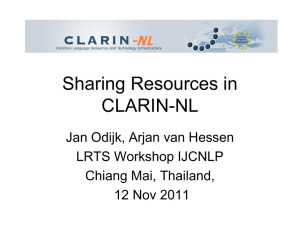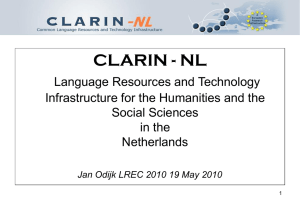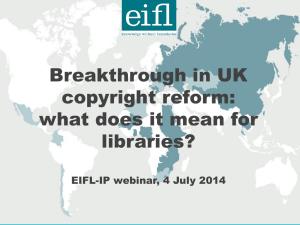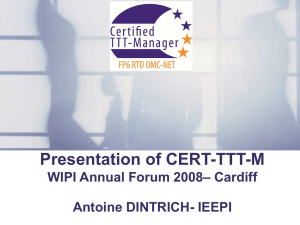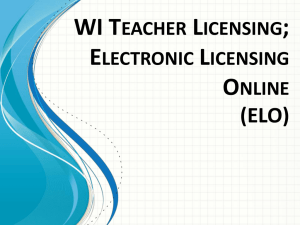CLARIN Licensing Schemes
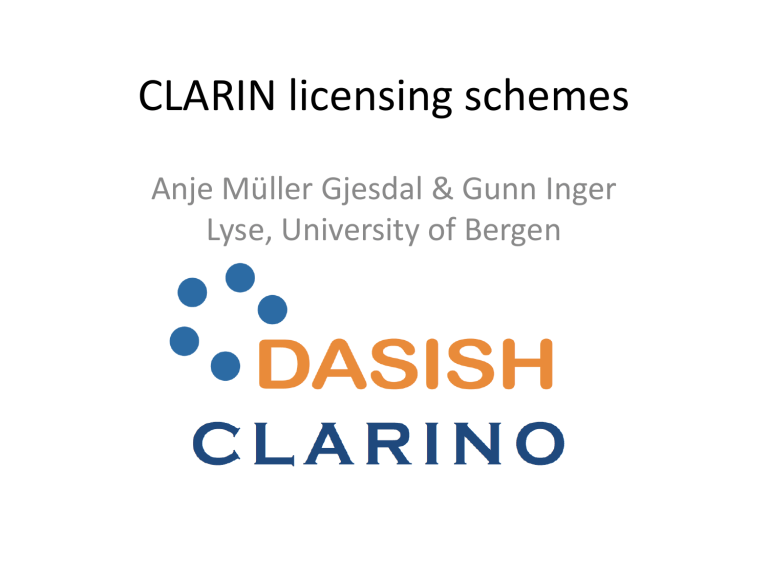
CLARIN licensing schemes
Anje Müller Gjesdal & Gunn Inger
Lyse, University of Bergen
Paper outline
1. CLARIN
1. Organisational structure
2. Types of data
2. The CLARIN licensing scheme
1. Organisational model
2. Basic concepts
3. Sub-categories
CLARIN
• Distributed data infrastructure with sites all over
Europe (universities, libraries, archives etc.)
• Provides access to digital language data collections, tools to work with them and expertise for researchers
• Members: Austria, Bulgaria, Czech Republic,
Germany, Denmark, Estonia, the Netherlands,
Poland. Norway has observer status.
• ERIC since 2012
CLARIN
• General assembly
• Board of directors
• National consortia, e.g. CLARINO in Norway
• Expert committees on standards and legal issues
CLARIN centers
• Type A centres offer services that are relevant for the infrastructure as a whole and that need to be offered at a high level of commitment (stability, availability, persistence)
• Type B centres offer services that include the access to the resources stored by them and tools deployed at the centre via specified and CLARIN compliant interfaces in a stable and persistent way
• Quality assurance: Service Level Agreements,
Data Seal of Approval
Types of data
• Spoken data (e.g. spontaneous speech, recorded conversations)
• Web pages
• Copyrighted text (e.g. novels, research articles)
Types of data - example
• The Norwegian Spanish Parallel Corpus (NSPC)
• a parallel, unidirectional translation corpus of contemporary Norwegian written texts translated into Spanish, published between 2000 and 2009
• contains fiction and non-fiction, and each text is classified according to genre, the author's gender and the gender and mother tongue of the translator.
• Available under the CLARIN ACA license
Types of data – example
Search interface NSPC
Types of data – example
Search results for the word
‘Hollywood’ in NSPC
CLARIN licensing schemes – organisational model
CLARIN licensing schemes
• Challenge: how to get linguists to license their research output?
• Solution: A classification system (‘laundry tags’) for licensing
– Categorizes existing fixed licensing schemes (e.g.
Creative Commons, Open Data Commons Open
Database License)
– Provides license agreement templates for new resources
CLARIN licensing scheme sub-categories
– A requirement for strictly Non-Commercial use (NC)
– A requirement to inform the copyright holder regarding the usage of the tools and/or the resources in published articles (INF)
– A option to redeposit modified versions of the tools and resources with the Service Provider (ReD)
– A requirement that the resource has to be kept in the
CLARIN Secure Server environment (LOC)
– A requirement that the Resource may need to be handled with care in order to respect the privacy of the personal data it contains and if samples of the data are published, they must be anonymized according to best practices (PD)
Example: LINDAT-CLARIN, Centre for Language
Research Infrastructure in the Czech Republic
Example: LINDAT-CLARIN
Example: LINDAT-CLARIN
CLARIN services
• Offers templates
– CLARIN Deposition License Agreements (DELA)
(PUB, ACA, RES)
– CLARIN End User Agreement (EULA)
– CLARIN Terms of Service (TOS)
• Legal issues committee
Links
• CLARIN ERIC: http://www.clarin.eu/
• CLARINO: http://clarin.b.uib.no/
• FIN-CLARIN Legal: http://www.helsinki.fi/finclarin/legal
